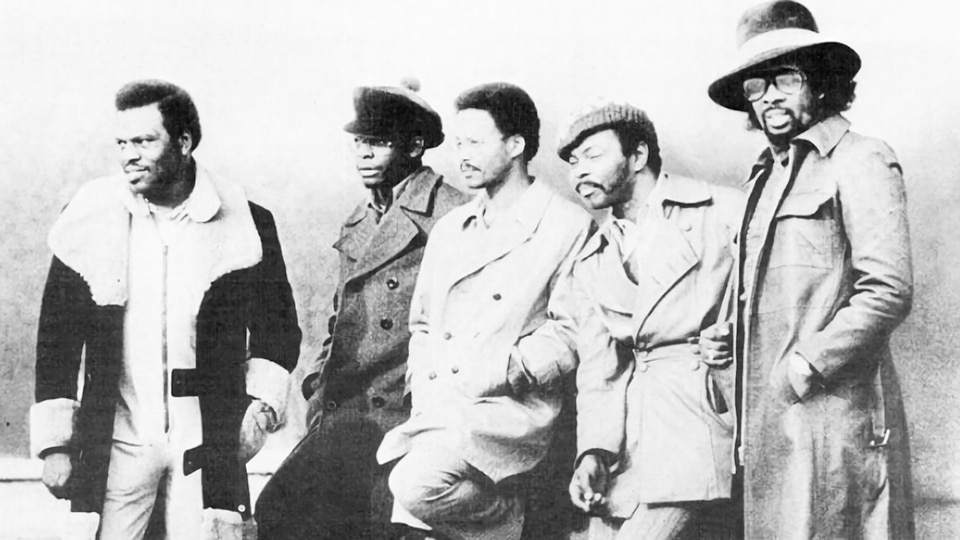Through their Philadelphia International Records label, Kenneth Gamble and Leon
Huff helped to transform the sound of 1960s soul into something more lush,
symphonic, and dramatic. Lavish instrumental arrangements with sweeping strings
and piercing horn sections dominated R&B in the early 1970s, embodying what
became known as "the Philadelphia sound" or simply "Philly soul." Infusing funk
and jazz influences, the orchestrally-laden soul music set the stage for disco
later in the decade -- what James Brown and Parliament-Funkadelic trombonist
Fred Wesley
described as
"putting the bowtie on funk."
Enter The Manhattans, a popular R&B vocal group from nearby Jersey City who
claimed
to name themselves after the cocktail rather than the nearby island. With roots
in the early 60s doo-wop era, they hit their stride in the 1970s, striking gold
with "There's No Me Without
You" and chart-topper
"Kiss and Say Goodbye,"
the second-ever single to go platinum after the Recording Industry Association
of America introduced that certification in 1976. Penned by Manhattans member
Winfred "Blue" Lovett, who also performed the spoken baritone monologue in the
song's intro, "Kiss and Say Goodbye" captures the essence of Philly soul, with
its soft strings, organ and vibraphone melodies countering the mournful lead
vocals courtesy of frontman Gerald Alston. It's no coincidence that the backing
band was none other than
MFSB – which
stood for "Mother, Father, Sister, Brother" – a pool of over 30 musicians who
laid the foundation of the Philadelphia sound, and the house band of
Philadelphia International Records.
"Shining Star," The Manhattans' highest charting hit since "Kiss and Say
Goodbye," is another sweet slice of Philly soul from 1980, with all of the
genre's hallmarks: lush string washes, punchy horns, organ, and funky bass
lines. The group's dynamic back-up harmonies weave in and out while Gerald's
lead vocals carry the song's narrative, highlighting certain phrases: "Honey,
you are my shining star" and "Wanna be here right where you are." What sets this
song apart from the rest is its brief, catchy, and repetitive guitar hook, based
on a I-IV progression, while major seventh chords from the organ add color to
the overall sound. Based around E and A chords, the guitar line uses an open C
chord shape at the seventh fret with a couple of hammer-ons from D to E on the D
string, before strumming an A major seventh chord. Sampled by several hip-hop
artists since, the guitar hook obviously made a considerable impact in the
decades to come.
The sampled guitar hook in "Shining Star" isn't The Manhattans' only connection
to hip-hop. Manhattans signer Gerald Alston sang lead on Wu-Tang Clan's "Stick
Me For My Riches" on
their 2007 release 8 Diagrams. The track is an impressive slab of lamenting
soul-rap, a six-minute evolutionary link between Philly soul and hip-hop, and
one of many ingenious generational and musical crossovers that prove that genres
don't exist in a vacuum.
Leila Abdul-Rauf is a multi-instrumentalist and composer based in Oakland, CA.
Leila is guitarist and vocalist for metal bands
Vastum, Hammers of
Misfortune, and ethereal post-punk
band Terebellum. She
also composes and produces ambient music under her own
name, and with electronic trio
Ionophore and synth-folk duo
Fyrhtu. Leila has toured internationally and
is a private guitar and voice teacher in her spare time.
"The
Manhattans" by
Starday-King Records is in the public domain.
There's much more to explore with Rocksmith+. Click
here and take the next step on your
musical journey.









